Coffee lovers treasure the coffee percolator for making a rich and strong brew, showing how people have always searched for the perfect cup of coffee. The percolator is simple but effective, boiling water and sending it through coffee grounds over and over. This process, called percolation, soaks the water with delicious coffee flavors, making a bold and hearty drink. The percolator isn’t just a tool; it’s a key part of coffee-making history.
What is a Coffee Percolator?
A coffee percolator is a type of pot used for the brewing of coffee by continually cycling the boiling or nearly boiling brew through the grounds using gravity until the required strength is reached. The process involves hot water being cycled through coffee grounds, where it extracts the coffee flavors, and then the water (now coffee) is recycled back into the hot water to brew further. This cycle can repeat several times to make the coffee stronger.
In the early 19th century, inventors began patenting devices like the percolator, with the first patents appearing around 1819. But it was James Nason, an American inventor, who got a patent for an early stovetop percolator version in 1865, paving the way for more inventions. Hanson Goodrich, another American, patented a design in 1889 that looks a lot like today’s percolators. Goodrich’s design, which used a vertical tube to cycle boiling water over coffee grounds and then back down, is still the basis for how percolators work.
Through the 20th century, percolators became a common sight in American homes and diners, symbolizing community and the comforting ritual of making coffee. The arrival of electric percolators early in the century made them even more popular, providing an easy and reliable way to brew coffee. Even though drip coffee makers and espresso machines later became popular, the percolator has held on, loved for its unique way of highlighting the coffee’s flavor and strength.
The story of the coffee percolator is more than just about new gadgets; it shows how coffee culture and what people like in coffee have changed over time. From the stovetop models of the 1800s to the electric versions that were big in the mid-1900s, each version of the percolator has added to the variety of ways people can make coffee. Today, even when quick and easy options often win out, the percolator remains a favorite for those who value the brewing ritual and the rich taste it adds to their daily coffee.
The Basics of a Coffee Percolator
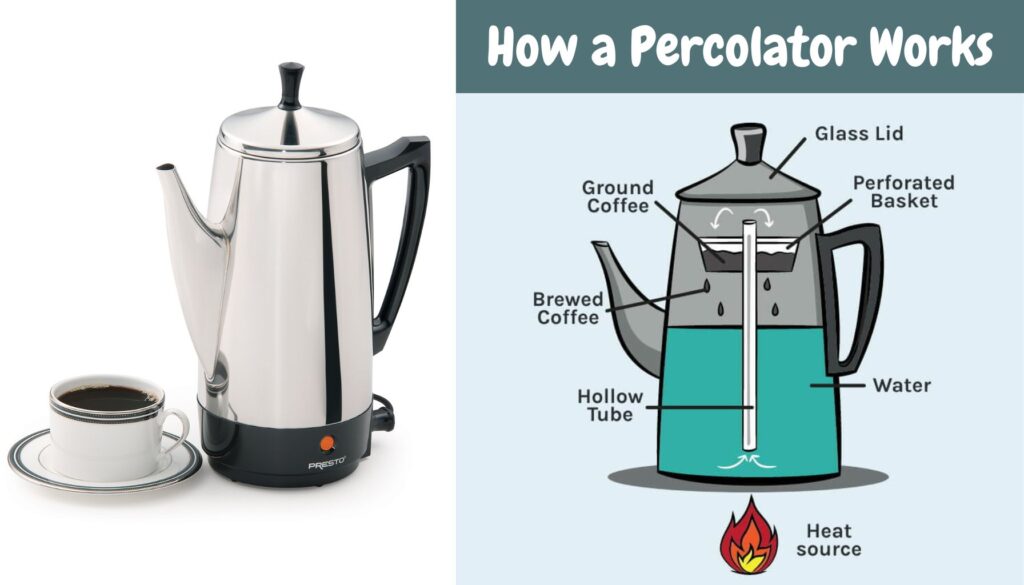
At its core, a coffee percolator is a type of pot used for brewing coffee by continuously cycling the boiling or nearly boiling brew through the grounds using gravity until the required strength is reached. Unlike other brewing methods that rely on pressure or steeping, percolation involves the movement of water through coffee grounds, allowing for a unique extraction process that characteristically yields a robust and full-flavored coffee.
The Process of Percolation
Percolation in coffee making is a methodical process that combines the principles of extraction and gravity. Here’s how it works:
- Heating: The water in the bottom chamber of the percolator is heated until it boils or nears boiling point.
- Cycling: The rising steam pressure forces the hot water up a vertical tube in the center of the percolator.
- Saturating: At the top of the tube, the water disperses and drips over the coffee grounds housed in a perforated basket.
- Extracting: The water, now mixed with coffee essence, filters through the grounds and perforated bottom, falling back into the lower chamber.
- Repeating: This cycle repeats, with the brew gradually becoming richer as water continually cycles through the grounds.
Parts of a Percolator
- Water Chamber: The lower part of the percolator where water is filled and heated. It’s the starting point of the percolation cycle.
- Coffee Basket: A perforated container that holds the coffee grounds. It’s typically located above the water chamber and below the spreader cover, which evenly distributes water over the grounds.
- Tube (or Stem): A vertical tube that connects the bottom chamber with the top part of the percolator. It guides boiling water upwards towards the spreader cover.
Types of Coffee Percolators
Stovetop Percolators
- Design: Stovetop percolators are designed to be used on a stove or any external heat source. They are typically made from durable materials like stainless steel or aluminum.
- Use: The user controls the brewing process by managing the heat source, which affects the percolation rate and, consequently, the coffee’s strength and flavor.
Electric Percolators
- Design: Electric percolators come with a built-in heating element, eliminating the need for a stove. They often feature automatic settings to control the brewing time and maintain the coffee at an ideal serving temperature once brewing is complete.
- Use: These percolators are prized for their convenience and consistency, offering a more hands-off approach to percolation. They are ideal for those who appreciate the percolator method but prefer a simpler, more consistent brewing process.
Both stovetop and electric percolators have their enthusiasts, with the choice often boiling down to personal preference regarding convenience, control, and the ritual of brewing. The enduring appeal of percolators, regardless of type, lies in their ability to produce a distinctly rich and hearty cup of coffee that is both a nod to traditional coffee-making methods and a testament to the diverse tastes of coffee drinkers worldwide.
How to Use a Coffee Percolator: A Step-by-Step Guide
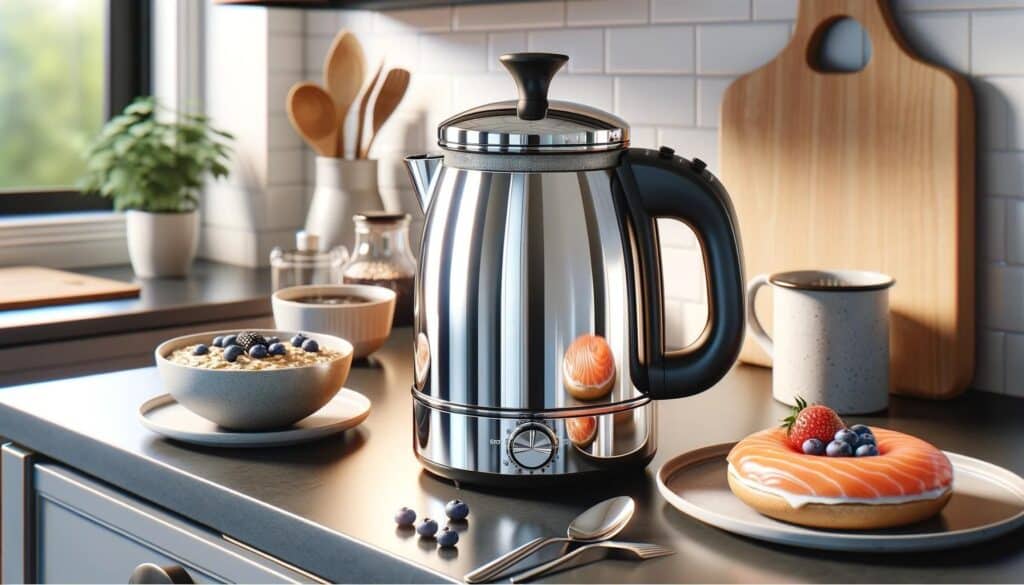
Using a coffee percolator can seem like an art form to the uninitiated, but with a bit of practice, it can become a rewarding part of your coffee-making routine. Here’s a detailed guide to help you master the percolation process for a perfect cup of coffee every time.
Preparing the Percolator
- Clean Your Percolator: Ensure all parts of your percolator are clean and free from old coffee grounds or residue. This includes the water chamber, coffee basket, and tube.
- Assembly: Place the tube into the water chamber, and then fit the coffee basket over the tube. Ensure everything is correctly positioned for optimal water flow.
Measuring and Adding Coffee
- Coffee Grind: Use a coarse grind for your coffee. A grind that’s too fine can pass through the perforations in the basket and make your coffee gritty.
- Measure: The general rule is about 1 tablespoon of coffee per 8 ounces of water, but you can adjust this ratio based on your personal taste preferences.
- Add Coffee to Basket: Distribute the coffee grounds evenly in the basket to ensure even water flow and extraction.
The Brewing Process
- Fill With Water: Pour cold water into the water chamber up to the desired level. Do not overfill; most percolators have a fill line.
- Heat: For stovetop models, place the percolator on the stove over medium heat. For electric models, plug in the unit and turn it on.
- Percolation Begins: As the water heats, it will begin to cycle through the coffee grounds. You’ll know it’s working when you see or hear the percolating process.
- Watch the Brew: The key to a great percolated coffee is to not over-extract. Once percolation starts, brew for about 7 to 10 minutes. Adjust the time based on your taste preference.
- Remove from Heat: Once brewing is complete, immediately remove the percolator from the heat source or turn off the electric model to prevent over-extraction.
Tips for Getting the Best Results
- Coffee Grind Size: A coarse grind is crucial. Too fine, and you risk clogging the percolator and over-extracting your coffee.
- Water Temperature: The perfect brewing temperature is just below boiling. On a stovetop model, lower the heat once percolation begins to maintain this temperature.
- Brewing Time: Typically, 7 to 10 minutes of percolation is sufficient. Taste your coffee after the first few uses and adjust the brewing time as needed for stronger or milder coffee.
By following these steps and tips, you can harness the full potential of your coffee percolator, crafting a cup of coffee that’s rich, flavorful, and uniquely satisfying. Whether you’re using a stovetop or an electric model, the secret to percolator success lies in the grind, the timing, and a bit of practice. Enjoy the process as much as the coffee itself, and you’ll soon master the art of percolation.
Advantages of Using a Coffee Percolator
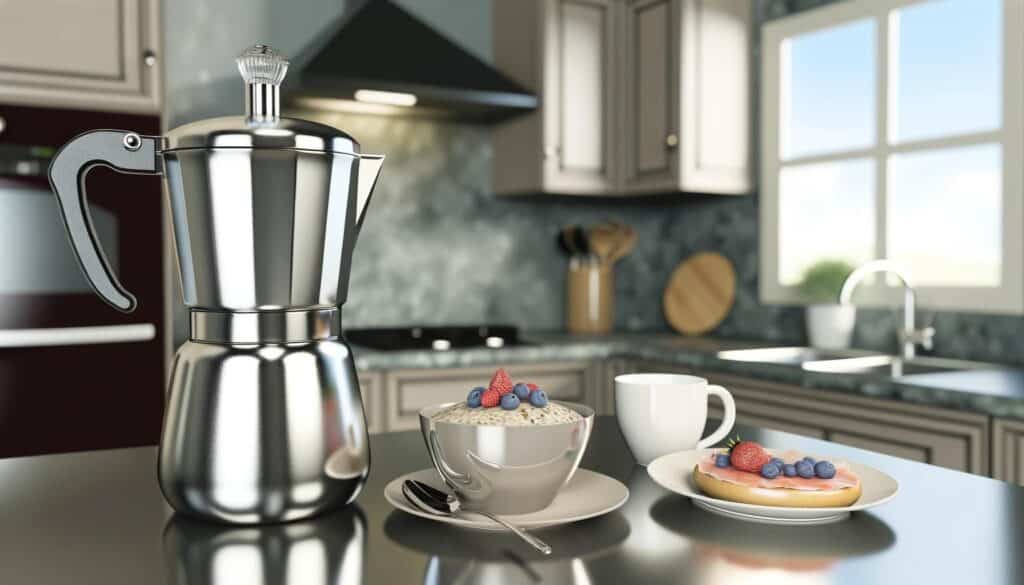
Coffee percolators have been a staple in the coffee brewing world for generations, cherished for their distinctive brewing method that offers a number of unique advantages. Below are some of the primary benefits that make percolators a favored choice among coffee aficionados.
Rich and Full-bodied Flavor
- Intense Extraction: The percolation method allows for a thorough extraction of flavors from the coffee grounds. The repeated cycling of boiling water through the grounds extracts a rich array of flavors and oils that might otherwise remain unutilized in other brewing methods.
- Bold Taste: This method typically results in a stronger, more robust coffee. The full-bodied flavor is characteristic of percolation, appealing to those who prefer their coffee with a pronounced taste profile.
Versatility and Control over the Brewing Process
- Customizable Strength: With a coffee percolator, the brewer has significant control over the strength and flavor of the coffee. By adjusting the brewing time, the grind size of the coffee, and even the temperature, users can customize their coffee to their exact preferences.
- Various Heat Sources: Especially with stovetop models, percolators can be used over various heat sources, including electric stoves, gas burners, and even campfires for those who like to enjoy a good cup of coffee in the great outdoors. This versatility ensures that you can enjoy your preferred coffee no matter where you are.
Durability and Simplicity of Design
- Built to Last: Coffee percolators, particularly those made from stainless steel, are renowned for their durability. With no intricate electronics or fragile components (especially in stovetop models), percolators can withstand years of use.
- Ease of Use and Maintenance: The design of coffee percolators is relatively simple, which not only makes them easy to use but also easy to clean and maintain. Their simplicity is a stark contrast to the often complex and delicate parts of more modern coffee machines.
- No Dependence on Electricity: For stovetop models, there’s no dependence on electricity, making percolators an eco-friendly and convenient option for outdoor activities or situations where power is unavailable.
The enduring appeal of the coffee percolator lies not just in the rich, flavorful coffee it produces but also in the ritual of brewing itself. The process, control, and anticipation of brewing coffee in a percolator connect users to a tradition that predates the modern convenience of push-button coffee machines, offering a tactile and rewarding coffee-making experience. Whether it’s the robust flavor, the versatility, or the sheer durability of the device, a coffee percolator represents a timeless tool in the art of coffee preparation, bridging generations of coffee lovers.
Disadvantages of Using a Coffee Percolator
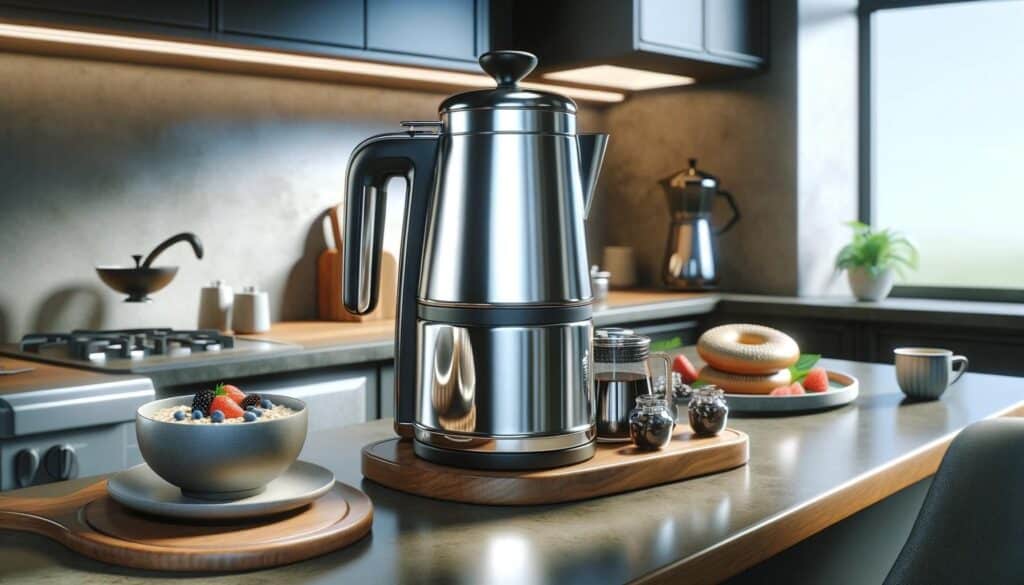
While coffee percolators are celebrated for their ability to brew rich and flavorful coffee, there are some disadvantages associated with their use. Understanding these drawbacks can help you decide whether a percolator fits your coffee brewing preferences and lifestyle.
Can Lead to Over-Extraction
- Bitter Taste: The process of continuously cycling boiling water through the coffee grounds can lead to over-extraction if not carefully monitored. This can result in a bitter and harsh taste, as the prolonged exposure to heat draws out undesirable compounds from the coffee grounds.
- Fine Balance: Achieving the perfect brew with a percolator requires finding a fine balance in the brewing time. Too long, and the coffee becomes overly strong and bitter; too short, and it may be weak and underwhelming. This level of precision may not be ideal for everyone, especially those who prefer a more straightforward brewing process.
Requires More Attention Than Other Brewing Methods
- Monitoring: Unlike drip coffee makers or single-serve pod machines that offer “set it and forget it” convenience, percolators require monitoring to ensure that the coffee does not over-brew. This attention to detail can be a deterrent for those with busy lifestyles or those who prefer a more hands-off approach to coffee brewing.
- Heat Management: Particularly with stovetop percolators, managing the heat source to maintain the right temperature for optimal extraction can be tricky and requires constant attention. This learning curve and need for vigilance can be seen as a drawback by some users.
Cleanup and Maintenance
- More Components: Percolators consist of several parts, including the water chamber, coffee basket, and tube, all of which need to be cleaned regularly to prevent buildup and ensure the best tasting coffee. This can be more labor-intensive compared to simpler brewing methods.
- Manual Cleaning: The design of percolators, especially traditional models, often necessitates manual cleaning rather than the convenience of dishwasher-safe parts found in many modern coffee machines. This can add an extra step to the cleanup process, which may not be appealing to everyone.
Despite these disadvantages, many coffee lovers continue to use and enjoy percolators for the unique flavor profile they can achieve and the hands-on brewing experience they offer. For those willing to invest a bit of time and attention, percolators can provide a deeply satisfying coffee brewing and drinking experience. However, it’s essential to weigh these considerations against personal preferences and lifestyle to determine if a percolator is the right choice for your coffee ritual.
Comparing Percolators with Other Coffee Brewing Methods
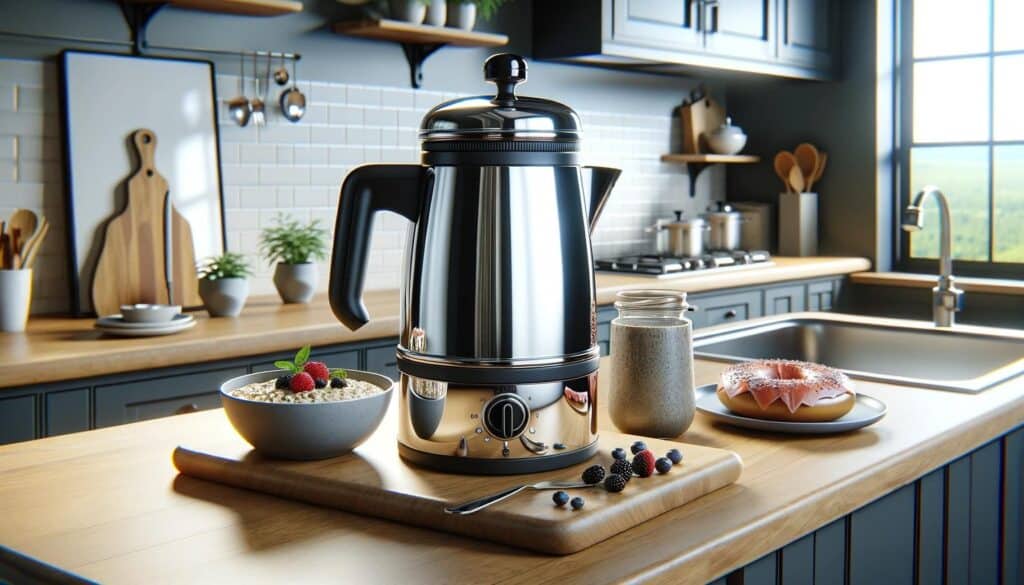
Comparing coffee percolators with other brewing methods offers insight into the diversity of coffee culture and the range of flavors, textures, and experiences available to coffee enthusiasts. Here’s how percolators stack up against drip coffee makers, French presses, espresso machines, and pour-over setups:
Percolators vs. Drip Coffee Makers
- Flavor: Percolators brew coffee that is often richer and more robust due to the repeated cycling of boiling water through the grounds, which can extract more flavor. Drip coffee makers typically produce a cleaner, milder cup of coffee since water passes through the grounds just once.
- Convenience: Drip coffee makers generally offer more convenience with programmable settings, automatic shut-off features, and less need for monitoring during the brewing process.
- User Control: Percolators give users more control over the strength and flavor of their coffee by adjusting the brewing time. Drip machines offer less flexibility in this regard, though some models come with strength settings.
Percolators vs. French Press
- Texture and Body: French press coffee is known for its rich body and texture, as the coffee oils and fine particles remain in the brew, similar to percolated coffee. However, French press coffee often has a denser mouthfeel due to its brewing method, which does not filter out the fine sediments.
- Ease of Use: Both methods require attention to detail (grind size, water temperature, and brewing time), but the French press can be a bit more forgiving with its “set and forget” brewing phase.
- Cleanup: French presses typically require less cleanup than percolators since they have fewer parts. However, disposing of used grounds can be messier with a French press.
Percolators vs. Espresso Machines
- Brew Type: Espresso machines produce a concentrated shot of coffee by forcing hot water through finely-ground coffee under high pressure, which is quite different from the gentle percolation process.
- Flavor Profile: Espresso is characteristically strong, rich, and has a creamy top layer called crema, contrasting with the robust and full-bodied but less concentrated flavor of percolator coffee.
- Investment and Skill: Espresso machines tend to be more expensive and require more skill and maintenance than percolators, making them less accessible for casual coffee drinkers.
Percolators vs. Pour-Over Coffee
- Flavor Clarity: Pour-over coffee is celebrated for its clean flavors and the ability to highlight subtle notes in coffee due to the slow and precise brewing process. In contrast, percolator coffee is more about strength and boldness of flavor.
- Technique and Control: Pour-over brewing offers significant control over every variable in the brewing process, from water temperature to flow rate, which appeals to enthusiasts looking to experiment with their brew. Percolators provide less precision in these areas but offer simplicity and a traditional brewing experience.
- Equipment and Cleanup: Pour-over setups require minimal equipment and are typically easier to clean than percolators, appealing to those who prioritize convenience and minimalism in their coffee brewing routine.
Each of these methods has its aficionados and particular situations where it shines, from the rich and hearty cup of a percolator to the nuanced and delicate flavors of pour-over coffee. The choice often comes down to personal preference, the desired level of involvement in the brewing process, and the specific coffee experience one is seeking.
Tips for Choosing the Right Coffee Percolator
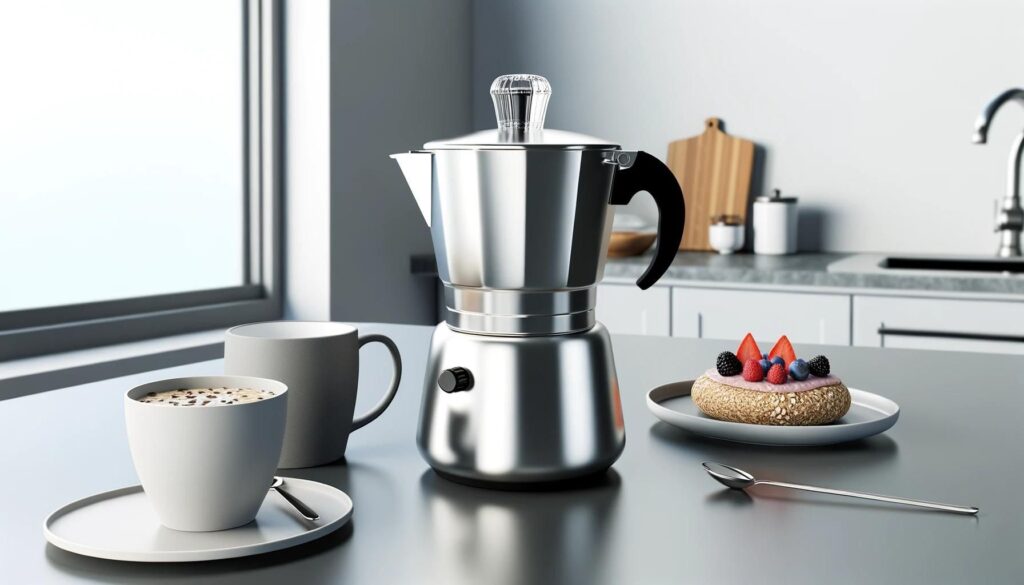
Choosing the right coffee percolator involves considering several factors to ensure it meets your coffee brewing needs and preferences. Here are some tips to guide you through selecting the best percolator for your home or outdoor adventures.
Capacity Considerations
- Personal vs. Group Use: Determine the amount of coffee you typically brew. If you’re brewing just for yourself, a smaller percolator might suffice. For family use or entertaining guests, consider a larger capacity percolator to avoid the need for multiple brewing cycles.
- Size and Storage: Keep in mind the size of the percolator, especially if kitchen space is limited. Larger capacity models require more storage space.
Material: Stainless Steel vs. Aluminum
- Stainless Steel: Known for its durability and resistance to rust and corrosion. Stainless steel percolators often have a more premium feel and can withstand years of use. They’re also generally considered safer for health, as there’s no risk of aluminum leaching.
- Aluminum: Tends to be lighter and more cost-effective than stainless steel. Aluminum percolators heat up faster, which can be beneficial for quick coffee brewing, especially outdoors. However, they may not be as durable as stainless steel and require more careful handling to avoid dents and damage.
Features to Look for in Electric Percolators
- Automatic Keep-Warm Function: This feature keeps the coffee warm after brewing without over-extracting or burning the coffee, ensuring your second cup is as good as the first.
- Detachable Cord: A detachable cord makes it easier to serve coffee at the table and simplifies storage.
- Water Level Indicator: Helps in accurately filling the percolator with water, avoiding guesswork for the right coffee-to-water ratio.
- Cool-Touch Handle and Base: Enhances safety by reducing the risk of burns when handling the percolator.
- Adjustable Strength Settings: Some electric percolators offer settings to control the strength of the brew, catering to personal preferences for weaker or stronger coffee.
Price Range and Brands
- Budget: Decide on a budget before shopping. Percolators can range from relatively inexpensive for basic models to more pricey for those with advanced features or premium materials.
- Brands: Research brands known for quality and durability. Brands like Farberware, Presto, and Bialetti have a long-standing reputation in the percolator market, offering a range of models to suit different preferences and budgets.
- Warranty and Customer Service: Consider the warranty and the brand’s reputation for customer service. A good warranty can provide peace of mind, while responsive customer service can be invaluable for addressing any issues or questions.
By considering these factors, you can find a coffee percolator that not only meets your brewing needs but also becomes a cherished part of your coffee ritual for years to come. Whether you prefer the traditional approach of a stovetop model or the convenience of an electric percolator, the right choice can elevate your coffee experience, bringing the rich and full-bodied flavor of percolated coffee into your daily routine.
Maintenance and Care for Coffee Percolators
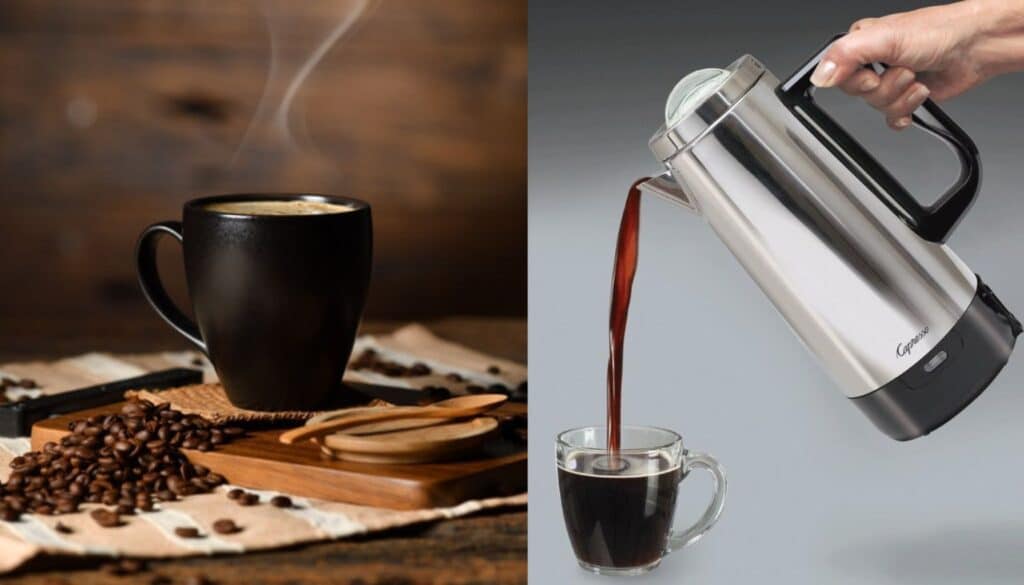
Proper maintenance and care are crucial to ensuring your coffee percolator continues to produce delicious coffee and lasts for many years. Regular cleaning, addressing common issues promptly, and knowing when to replace parts can significantly extend the life of your percolator. Here’s a comprehensive guide on maintaining your coffee percolator.
Cleaning Instructions
- After Each Use: It’s essential to clean your percolator after each use. Start by disassembling the percolator, separating the basket, tube, and lid from the pot.
- Washing: Most stainless steel percolators can be washed with warm, soapy water. Use a soft sponge or cloth to clean each part gently. Avoid using abrasive materials that can scratch the surface. For aluminum percolators, also use warm soapy water but be cautious as harsh detergents can tarnish the aluminum over time.
- Rinse and Dry: Rinse all parts thoroughly under clean water to remove soap residue. Dry the parts with a towel or let them air dry completely before reassembling to prevent mildew or rust.
- Deep Cleaning: Occasionally, perform a deep clean to remove coffee oils and mineral deposits. Fill the percolator with a mixture of water and white vinegar (equal parts), and let it percolate. After the cycle, let it cool, disassemble, and wash as usual. This helps in maintaining the interior clean and preventing any off-flavors.
Common Issues and How to Solve Them
- Coffee Tastes Bitter: This can be due to over-extraction. Reduce the percolating time or lower the heat once percolation begins. Ensure you’re using a coarse grind to prevent grounds from passing through the basket.
- Percolator Stops Working: For electric models, this could be due to electrical issues. Check the cord and plug for damage. If the unit still doesn’t work, consult the manufacturer’s warranty or a professional repair service.
- Water Leaks: Ensure all parts are correctly assembled and that there are no cracks in the percolator. Leaks in stovetop models can occur if the seal between sections is worn out.
Longevity and Replacement Parts
- Regular Inspection: Regularly inspect your percolator for signs of wear and tear, especially the handle, lid, and tube for any damage or degradation.
- Replacement Parts: Many percolator brands offer replacement parts such as baskets, tubes, and gaskets. Replacing worn-out parts can extend the life of your percolator significantly.
- Avoiding Damage: Handle your percolator with care to avoid dents and damage, especially with aluminum models, which are more prone to bending and denting.
- Proper Storage: Store your percolator in a dry place when not in use to prevent moisture buildup, which can lead to rust and corrosion.
By adhering to these maintenance and care instructions, you can ensure that your coffee percolator remains a reliable and cherished part of your coffee brewing routine for years. Regular cleaning, timely resolution of common issues, and the replacement of parts when necessary will keep your percolator brewing delicious coffee day after day.
Conclusion
The coffee percolator holds a special and beloved spot in coffee culture, showing off a mix of tradition, skill, and the quest for a deeply brewed cup of coffee. Even with new brewing tech and lots of ways to make coffee, the percolator has passed the test of time, still a top choice for many because of its strong flavor and the joy of making coffee with it.
When you brew coffee in a percolator, boiling water goes through the coffee grounds again and again, making a taste that’s both bold and full of flavor. This way of making coffee stands as a nod to the old-school methods, making many coffee lovers feel a sweet nostalgia and a connection to the past. It brings back memories of when making a cup of coffee was a thoughtful moment, a chance to stop and really get into the process.
Lots of percolator users share their first memories of tasting percolator coffee, often made by a parent or grandparent. These stories usually talk about the rich, deep taste, the comforting noise of the water percolating, and the excitement of waiting for the coffee to finish brewing. For many, using a percolator is more about the memories and feelings it brings back than just the coffee it makes. It reminds them of family times, peaceful mornings, and life’s simple joys.
The happiness from percolator coffee doesn’t just come from its taste but also from making it. Brewing with a percolator needs focus and care, making you an important part of making your coffee. This involvement gives a feeling of achievement and happiness that you might not get from more automatic ways of brewing.
In the end, the lasting popularity of the coffee percolator shows its power to mix simplicity with depth, tradition with modern enjoyment. It gives a brewing experience that’s both hands-on and full of senses, asking us to take it slow and enjoy not just the coffee but the moments it makes. For those who love this method, percolator coffee is more than just a drink; it’s a ritual that fills life with warmth, smell, and taste.
Frequently Asked Questions
Can You Use a Coffee Percolator for Tea?
Yes, you can use a coffee percolator to brew tea, but with a few considerations. Instead of coffee grounds, place tea leaves or tea bags in the basket. Keep in mind that controlling the brewing time and temperature is crucial to avoid over-extracting the tea, which can lead to bitterness. It’s a non-traditional method for brewing tea, so experimentation with timing and quantities may be necessary to achieve your preferred strength and flavor.
How Do You Prevent a Bitter Taste in Percolator Coffee?
To prevent a bitter taste in percolator coffee, consider the following tips:
- Grind Size: Use a coarser grind to reduce the chances of over-extraction, which can contribute to bitterness.
- Brewing Time: Limit the percolation time. Generally, 7 to 10 minutes of brewing should suffice, but you may need to adjust this based on your taste preference and the specific percolator.
- Water Temperature: Ensure the water is not too hot. For stovetop percolators, removing the percolator from the heat source just before it starts to boil can help manage the temperature.
- Freshness of Coffee: Use fresh coffee grounds, as stale coffee can taste more bitter.
Are Coffee Percolators Good for Making Coffee for Large Groups?
Coffee percolators are excellent for making coffee for large groups. Many percolators come in sizes large enough to brew multiple cups of coffee in one cycle, making them ideal for gatherings, meetings, or family breakfasts. The key is to choose a percolator with the capacity to meet your needs, with some models capable of brewing up to 12 cups or more at a time.
How Long Does Coffee Brewed in a Percolator Stay Fresh?
Coffee brewed in a percolator should ideally be consumed soon after brewing for the best taste and freshness. If kept on a warming function, it can remain pleasantly warm and fresh for about 30 minutes to an hour. Beyond that, the coffee may start to lose its optimal flavor and become overly strong or bitter. It’s always best to brew the amount of coffee you plan to consume and enjoy it while it’s fresh to capture the full spectrum of flavors that percolator coffee offers.
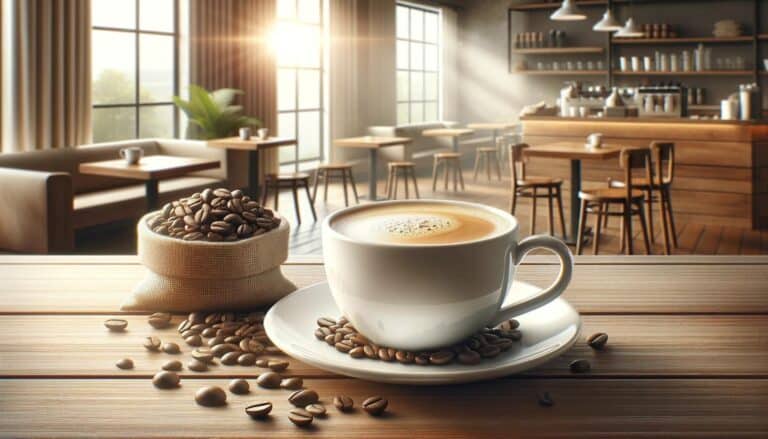
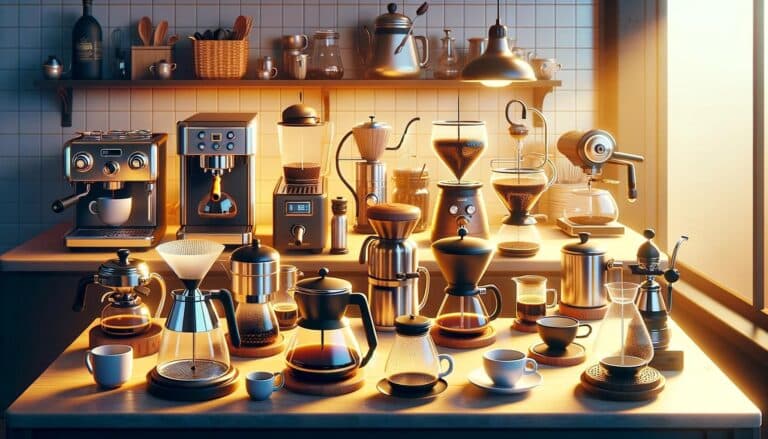
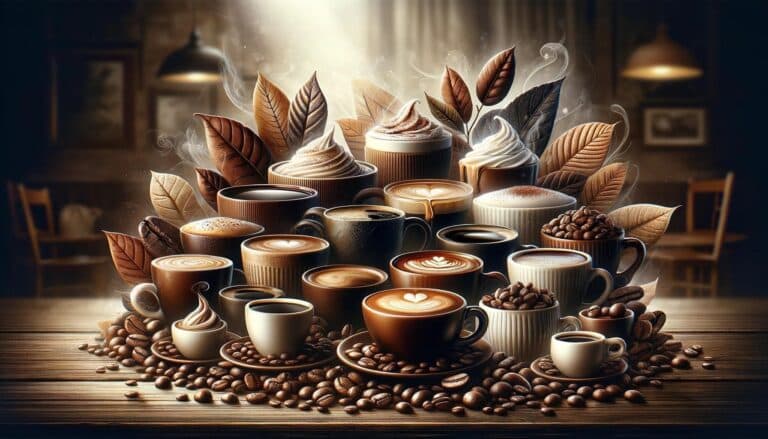
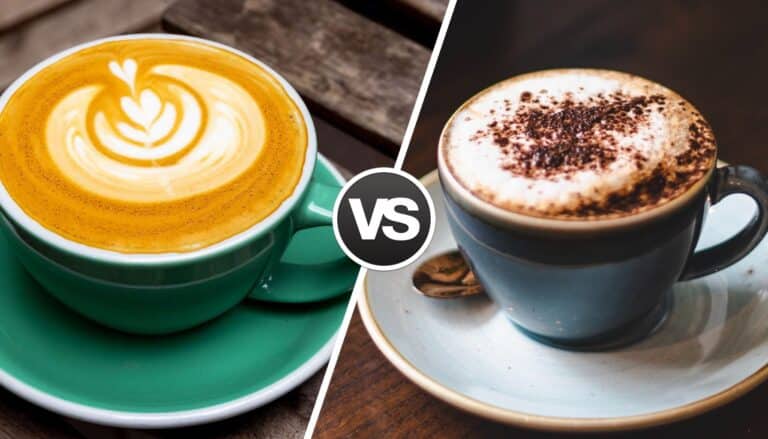

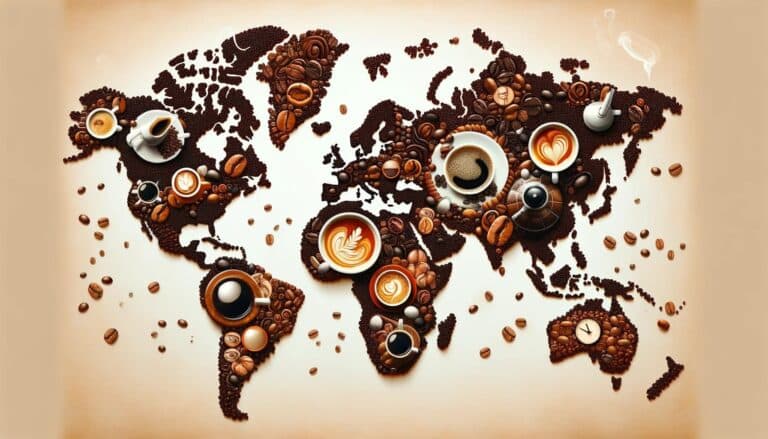

1 thought on “What is a Coffee Percolator?”
Keep up the great piece of work, I read few blog posts on this internet site and I conceive that your site is really interesting and has got circles of wonderful information.